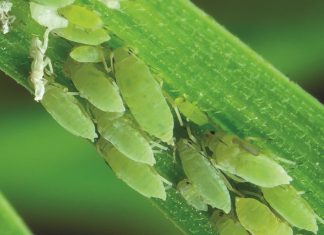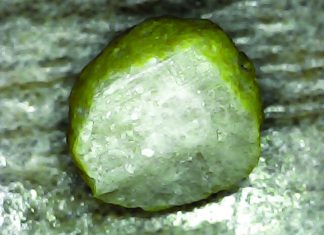
ARC-Grain Crops,
Potchefstroom
Seed represents culture, tradition, diversity and – most of all – life. It enables survival through the production of diverse, healthy food.
As the global population continues to grow, the need to produce more seed per hectare is crucial. Modern-day commercial producers know the benefits of using certified seed. Certified seed consistently out-yields farm-saved seed and in this article the benefits and risks of both (certified and non-certified seed) will be compared.
Certified seed
Clean, quality-assured seed
Certified seed is grown and processed under strict production requirements with strict limits on weeds and other crop kinds in the production phase. This will ensure a reduction in the risk of seed-borne and soil-borne diseases of purchased seed, thereby improving the germination rate which will have a positive effect on yield and profit potential. A good germination rate is thus guaranteed.
Genetic purity
Genetic purity is the primary goal and mission of certified seed programs. While varietal purity is maximised, other varieties and off-types are minimised. Pure seeds are the same size and shape, enabling precision planting. Certified seed produces higher yields and offers growers the genetic benefits of a specific variety.
Access to new genetics and premium markets
The producer has access to improved traits such as better yield, pest resistance, drought tolerance and herbicide tolerance. Planting of seed with certain genetic traits can give producers access to premium markets, such as high-oleic sunflower and canola for example.
Maximise other inputs
Most seed companies treat the seed at processing centres with fungicides and insecticides, in order to protect the seed from pests and diseases. This saves the producer time and effort and a higher quality disbursement of particle preparations on the seed itself is ensured. The use of certified seed prevents the spread of weed species via seed, resulting in the reduction of herbicide interventions.
Farm-saved (non-certified seed)
Dirty, contaminated seed
Overall, farm-saved seed contains more weeds, broken seeds, empty shells, small seeds and diseased seeds than certified seed. Close observation may also reveal sclerotisation of seed. A good example is Sclerotinia of sunflower, where the sclerotia looks very similar to that of the sunflower seed (Photo 1). Farm-saved seed may contain soil-borne and seed-borne pathogens as well as insects (when stored inadequately) that can lead to poor germination. It is up to the producer to incur extra costs to clean this seed. If done inadequately, weed seeds (for example) in farm-saved seed would be added to the weed seed bank, causing problems in the production phase of the crop. Often, the presence of soil-borne pathogens (Table 1) in infested seed will go unnoticed and when planted, will have a negative impact on the seedling and surrounding seedlings leading to weak plants (Photo 2) and yield loss. Some pathogens are carried on the seed coat, while others can be harboured deep inside the seed. Fungi and bacteria are mostly located on the seed coat and embryo infection is uncommon. Viruses are not carried on the seed coat and are only found in the seed embryo or tissues of the seed coat.
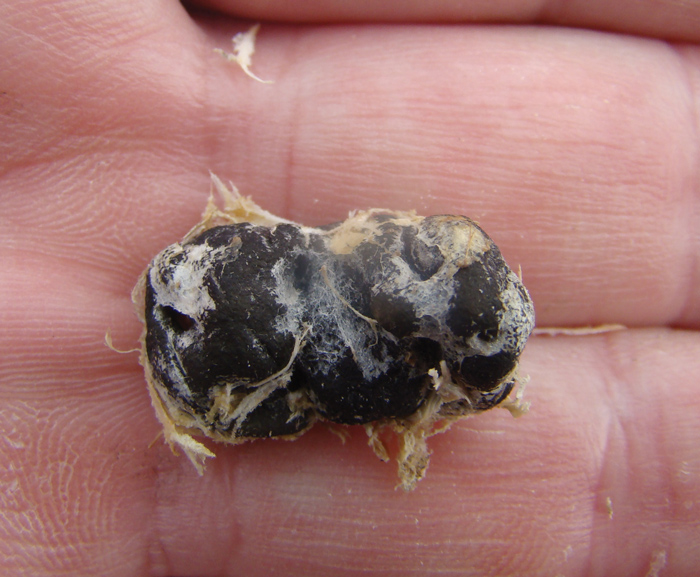
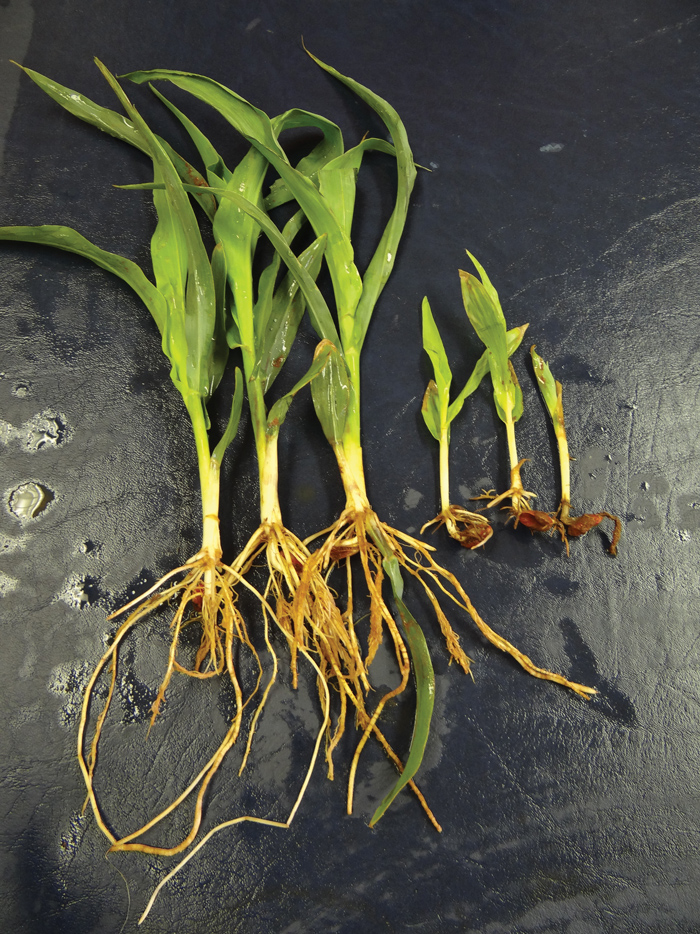
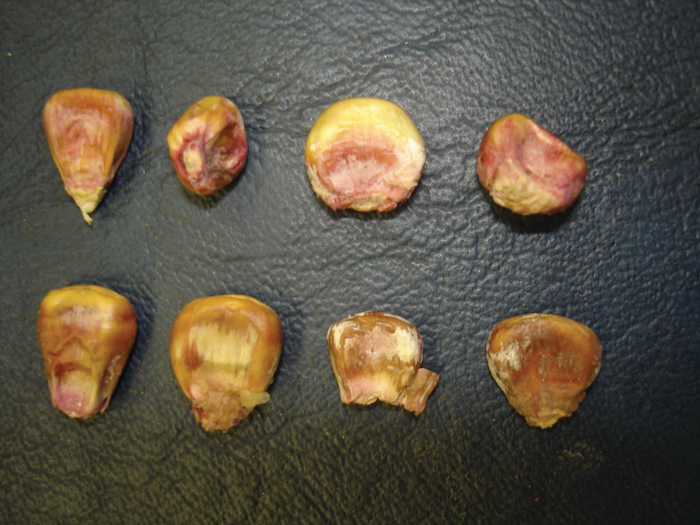
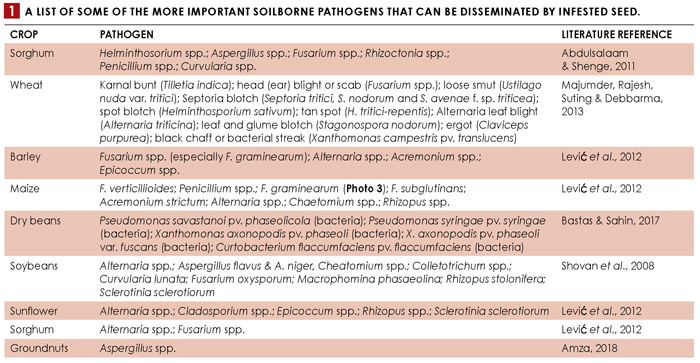 Decline in fertility
Decline in fertility
Prolonged used of uncertified seed leads to a decline in fertility due to seed blending or crossing of different varieties. There is a much greater danger of mutual crossing in cross-pollinated species (rye and triticale) than in self-pollinated species (wheat, barley, oats and soybeans).
More input costs
Farm-saved seed grown by producers is rarely uniform, generally resulting in reduced yields and – ultimately – reduced profits. When the crop is saved to be used as seed for the next year, cleaning of the seed is required. Producers do not possess the required equipment for quality application of fungicides and insecticides to seed, so their attempts result in uneven distribution of seed treatments. Seed that is not treated evenly and properly with the seed treatment substance will suffer from more diseases and insect attacks. Likewise, seed that is over treated will have lower germination. Producers may have to purchase more seed or apply more products if saved seed doesn’t perform as well as hoped.
Conclusion
The only advantage to planting farm-saved seed is lower initial costs, but it comes with high risk. Certified seed pays for itself through yield increases. Choose a strategy that will be beneficial in the long run and observe how your seed give life.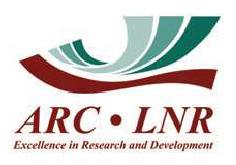
References
- Abdulsalaam, S & Shenge, KC. 2011. Seed-borne pathogens on farmer-saved sorghum (Sorghum bicolor L.) seeds. Journal of Stored Products and Postharvest Research, 2:24 – 28.
- Amza, J. 2018. Seed-borne Fungi; Food Spoilage, Negative Impact and Their Management: A Review. Food Science and Quality Management, 81:70 – 79.
- Bastas, KK & Sahin, F. 2017. Evaluation of seed-borne bacterial pathogens on common bean cultivars grown in central Anatolia region, Turkey. European Journal of Plant Pathology, 147: 239 – 253.
- Lević, J, Stankоvić, S, Krnjaja, V, Bočarov-Stančić, A & Ivanović, D. 2012. Distribution frequency and incidence of seed-borne pathogens of some cereals and industrial crops in Serbia. Journal of Pesticides and Phytomedicine, 27: 33 – 40.
- Majumder, D, Rajesh, T, Suting, EG & Debbarma, A. 2013. Detection of seed-borne pathogens in wheat: recent trends. Australian Journal of Crop Science, 4: 500 – 507.
- Shovan, LR, Bhuiyani, MKA, Sultana, N, Begumi, JA & Pervez, Z. 2008. Prevalence of fungi associated with soybean seeds and pathogenicity tests of the major seed-borne pathogens. International Journal of Sustainable Crop Production, 3: 24 – 33.










